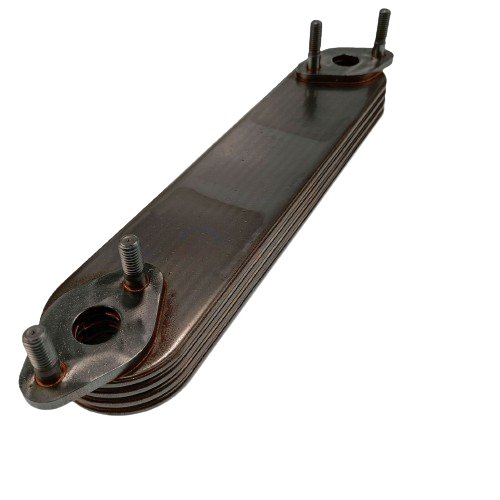As a responsible car owner, it is important to stay vigilant and pay attention to any warning signs that may indicate a potential problem with your vehicle. One crucial component that you should always keep an eye on is the oil cooler. The oil cooler plays a vital role in maintaining the optimal temperature of the engine oil, preventing it from overheating and causing damage to your engine. In this article, we will explore five warning signs that may indicate a faulty oil cooler, allowing you to take timely action and prevent any further damage.
1. Engine Overheating
One of the most obvious signs of a faulty oil cooler is engine overheating. The oil cooler helps regulate the temperature of the engine oil, ensuring that it doesn't exceed safe operating levels. If the oil cooler fails to perform its function properly, the engine oil may become too hot, leading to engine overheating. If you notice that your engine temperature gauge is higher than normal or that the engine starts to overheat, it is essential to have your oil cooler checked by a professional.
2. Oil Leaks
Oil leaks are another warning sign that there may be an issue with your oil cooler. If you find oil puddles or drips underneath your vehicle, it can indicate a leak in the oil cooling system. Oil leaks can occur due to various reasons such as a damaged oil cooler, loose fittings, or worn-out seals. It's important not to ignore oil leaks as they can lead to a significant loss of oil, resulting in engine damage. If you notice any oil leaks, it is advisable to have your vehicle inspected by a mechanic as soon as possible.
3. Engine Noise
A faulty oil cooler can also cause unusual engine noise. When the engine oil is not properly cooled, it can lose its viscosity and lubricating properties, leading to increased friction between the engine components. This increased friction can result in a loud knocking or ticking noise coming from the engine. If you hear any unfamiliar noises from your engine, it is crucial to have it inspected by a professional to determine the cause and address it promptly.
4. Reduced Oil Pressure
The oil cooler plays a crucial role in maintaining proper oil pressure within the engine. If you notice a sudden drop in oil pressure, it could indicate a problem with your oil cooler. Insufficient oil pressure can lead to engine damage, as it affects the lubrication of critical components. If your vehicle's oil pressure warning light comes on or you observe a significant decrease in oil pressure, it is essential to have your oil cooler and oil pressure system checked immediately to prevent any further damage.
5. Coolant Contamination
A faulty oil cooler can also lead to coolant contamination. The oil cooler is typically located near the coolant system, and a malfunctioning oil cooler can cause the coolant and oil to mix. This can result in a milky or foamy appearance of the coolant. Coolant contamination can be detrimental to the engine's performance and can cause internal damage if not addressed promptly. If you notice any signs of coolant contamination, it is advisable to have your vehicle inspected by a professional mechanic.
Conclusion
Being aware of the warning signs that indicate a faulty oil cooler is crucial for every car owner. Engine overheating, oil leaks, unusual engine noises, reduced oil pressure, and coolant contamination are all signs that should not be ignored. If you notice any of these warning signs, it is essential to have your vehicle inspected by a professional mechanic who can diagnose the issue and recommend appropriate repairs. Taking prompt action can prevent further damage to your engine and help you avoid costly repairs in the long run. Stay proactive and keep an eye out for these warning signs to ensure the longevity and reliability of your vehicle.

